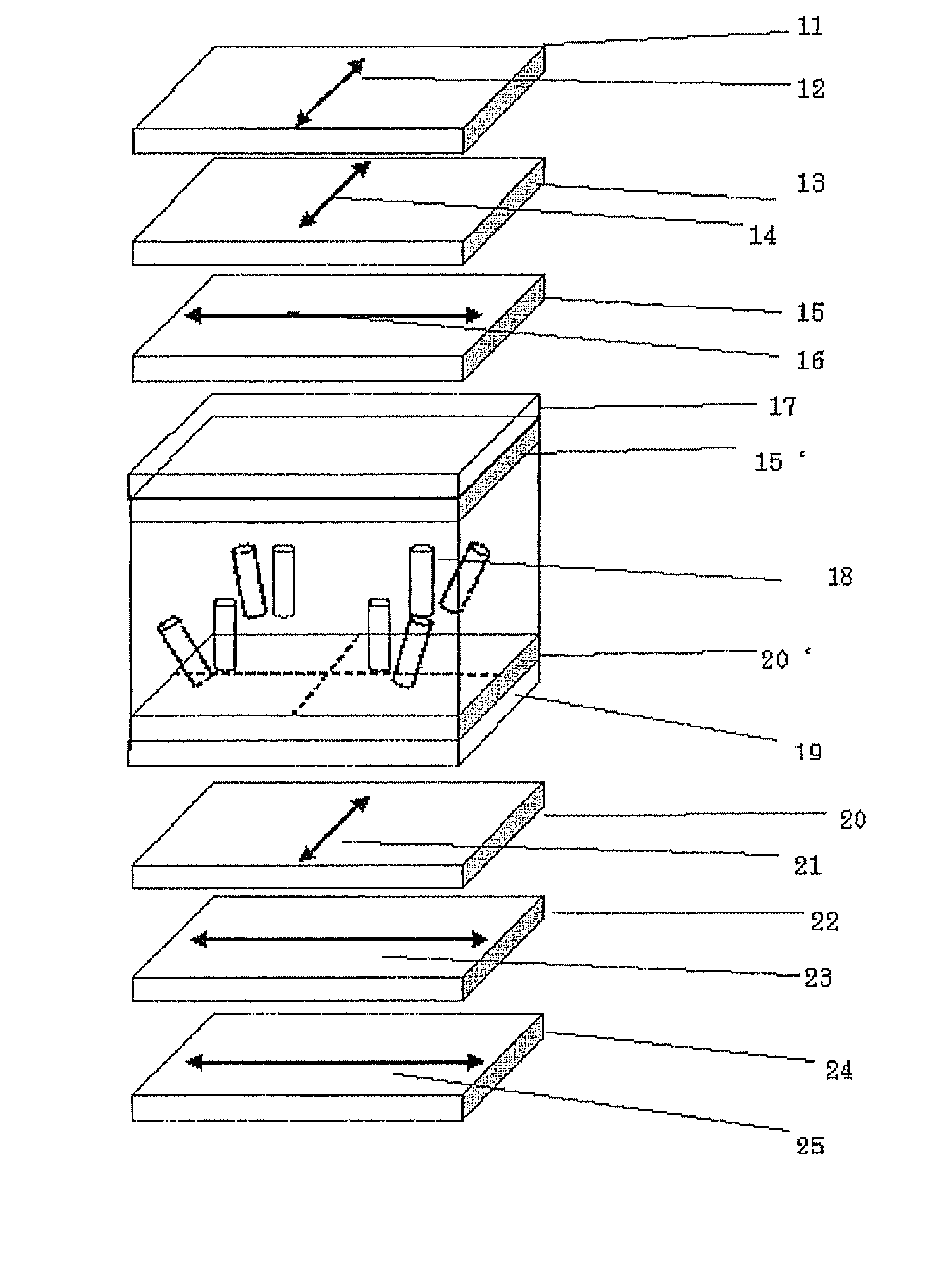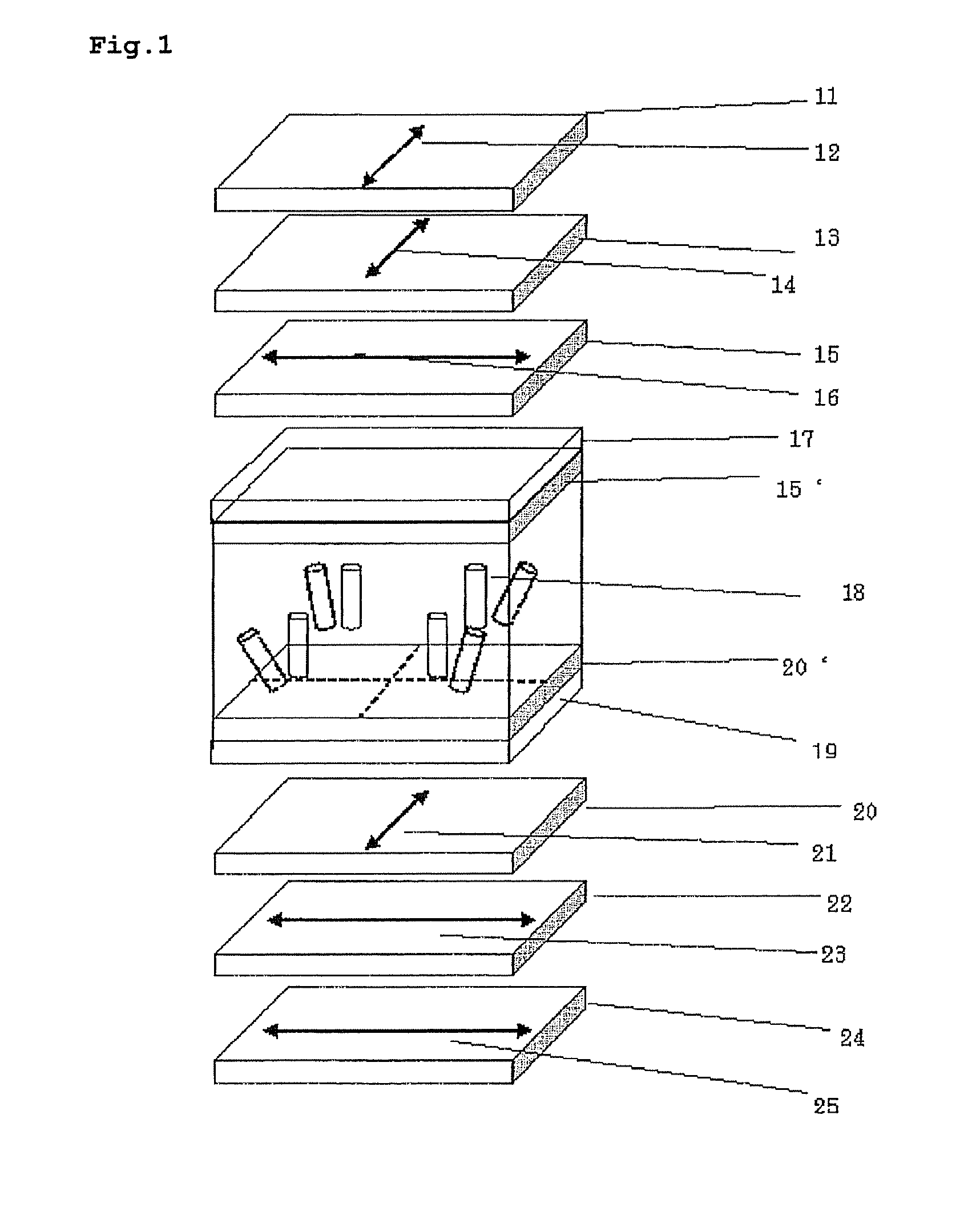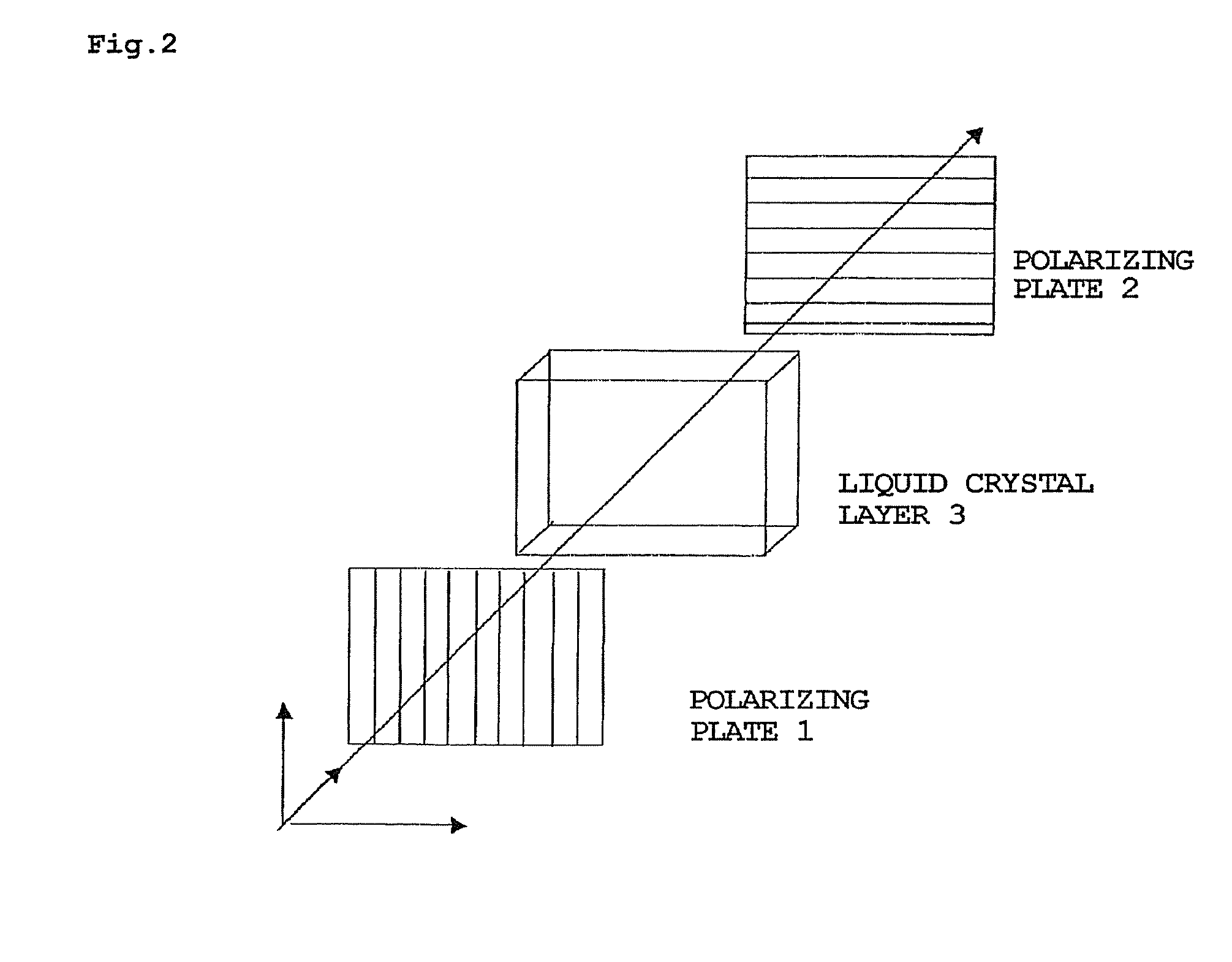Liquid crystal cell and liquid crystal display apparatus
a liquid crystal cell and liquid crystal display technology, applied in the field of liquid crystal cells and liquid crystal displays, can solve the problems of increasing thickness by the use of plural films, lowering the production yield of adhering plural films, and increasing production costs, so as to improve color reproducibility in a white state, the effect of high contrast and decreasing the change of contras
- Summary
- Abstract
- Description
- Claims
- Application Information
AI Technical Summary
Benefits of technology
Problems solved by technology
Method used
Image
Examples
example 1
[0192]Two cell samples were prepared with glass substrates with electrodes of a size of 30×40 mm, and subjected to measurements of optical characteristics.
[0193]To a surface of the glass substrate, a coating liquid of a following composition was applied by a #16 wire bar coater with an amount of 28 mL / m2, and dried for 60 seconds with warm air of 60° C. and for 150 seconds with warm air of 90° C. Then the formed film was subjected to a rubbing process for obtaining an alignment parallel to an in-plane slow axis (parallel to casting direction) of the cellulose acetate film (thus the rubbing axis being parallel to the in-plane slow axis of cellulose acetate film).
Composition of a coating liquid for forming an20parts by massalignment film following denatured polyvinylalcoholWater360parts by massMethanol120parts by massGlutaraldehyde (crosslinking agent)1.0part by massdenatured polyvinyl alcohol
[0194]To a surface of the alignment film, a coating liquid prepared by dissolving 91.0 g of a...
example 2
[0199]An optical simulation was conducted for confirming the effect, on an assumed liquid crystal display apparatus of a structure similar to that shown in FIGS. 1 and 8, constituted by laminating, from the observing (upper) side, an upper polarizing plate (protective film 11, polarizing film 13, and protective film 15 (also serving as an optical compensation film)), a liquid crystal cell (upper substrate 17, liquid crystal layer 18 and lower substrate 19), and a lower polarizing plate (protective film 20 (also serving as an external optical compensation film), polarizing film 22 and protective film 24), and positioning a backlight source (not shown) thereunder. The optical calculation was carried out with LCD Master Cer. 6.08 of Syntech Inc. For the liquid crystal cell, substrates and polarizing plates, values of the materials commonly employed in the liquid crystal display were employed. The liquid crystal material was assumed to have a negative dielectric anisotropy with Δ∈=−4.2....
example 3
[0204]In the liquid crystal cell of Example 1, an optical compensation layer was formed of a rod-like liquid crystal composition on the glass substrate, with an alignment direction parallel to a surface of the substrate and forming a crossing angle of 45° with the absorption axis 14 of the upper polarizing film 13. It was given a thickness of 1.8 μm and Re of 140 nm at a wavelength of 550 nm. Rth was 70 nm. It was photopolymerized by a UV irradiation by shielding a half area of the substrate from light, and the compensation film in an unpolymerized part was then removed by rinsing with isopropyl alcohol.
[0205]Under the liquid crystal cell, a white aluminum reflective film was provided in a portion corresponding to where the optical compensation film was formed, and a polarizing plate, with an absorption axis parallel to that of the upper polarizing plate, was provided in a portion corresponding to where the optical compensation film was removed.
[0206]In the visual observation of the...
PUM
 Login to View More
Login to View More Abstract
Description
Claims
Application Information
 Login to View More
Login to View More - R&D
- Intellectual Property
- Life Sciences
- Materials
- Tech Scout
- Unparalleled Data Quality
- Higher Quality Content
- 60% Fewer Hallucinations
Browse by: Latest US Patents, China's latest patents, Technical Efficacy Thesaurus, Application Domain, Technology Topic, Popular Technical Reports.
© 2025 PatSnap. All rights reserved.Legal|Privacy policy|Modern Slavery Act Transparency Statement|Sitemap|About US| Contact US: help@patsnap.com



